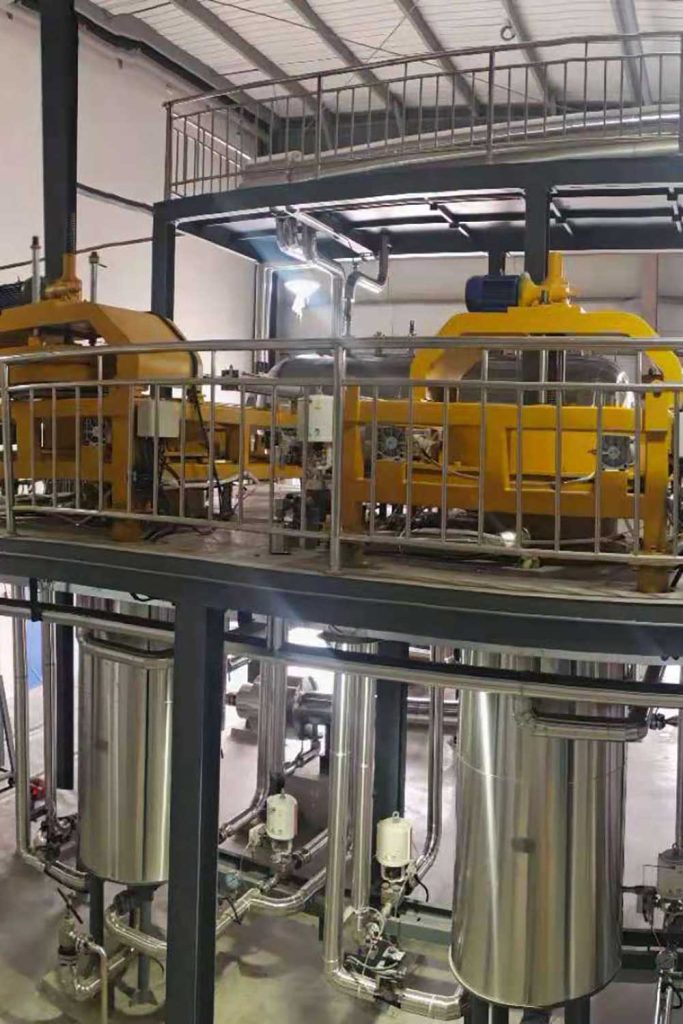Myrrh CO2 oil
The myrrh aroma is wonderfully warm, sweet-earthy, smooth, dense, and rich with a soft leather note; the aroma becomes sweeter in the drydown and has excellent fixative properties. It also has a somewhat deeper and richer aroma, and displays a bit more tenacity, than Myrrh essential oil. Yet even in the presence of heavy florals, it imparts sweetness, depth, and mystery.
The significant history of Myrrh dates back thousands of years of its extensive use in healing preparations, perfumery, incense, and ritualistic ceremonies – it is a key element in Kyphi, one of the earliest known perfumes. Indeed, while the resinous ‘tears’ of Commiphora myrrha have inspired many a legend, often with themes of comfort and solace, understated Myrrh surprisingly turns up in seductive love balms and other erotic anointments.
Xihuang Pill
Xihuang Pill is a traditional Chinese medicine prescription.
It is composed of four Chinese medicines: bezoar, musk, frankincense, and myrrh. It is mainly used in the treatment of breast cancer, liver cancer, leukemia, and other malignant tumors, and has achieved good curative effects.
Xihuang Wan has become one of the large varieties of traditional Chinese patent anti-tumor medicines due to its advantages such as precise curative effects and low side effects and has great market potential.
However, at present, Xihuang Pills are mostly used as whole medicinal powder, and the dosage is large. The preparation process is not conducive to modern production, storage, and transportation.
Extraction methods
Frankincense and Myrrh accounted for 74% of the formula of Xihuang Pills, both of which were used as medicine, which greatly increased the dosage.
Olibanum (Olibanum) is an oleo gum resin exuded from the bark of the olive family BoswelIia carterii Birdw. and several plants of the same genus. It contains volatile oil 3%~8%, resin 60%~70%, gum 27%~ 35%.
Myrrha (Myrrha)·Commiphora myrrha Engl, an olive family plant, and an oil gum tree exuded from the bark of several plants of the same genus, containing volatile oil 2.5%~9%, resin 25%~35%, Gum 57%~65%. Because both contain a large number of volatile components, some researchers extract and refine them to optimize the preparation process.
Traditional Chinese medicine extraction methods for volatile components, such as ethanol reflux extraction, Soxhlet extraction, etc., not only have poor extraction effects and low efficiency but also easily destroy their active ingredients due to heating.
Supercritical CO2 extraction
The supercritical CO2 extraction process has the advantages of low temperature, fast speed, high efficiency, no pollution, high extract purity, easy separation, etc., and is suitable for the extraction of volatile oil.
Put the myrrh powder into the extraction kettle, add the entrainer absolute ethanol, add 50~170ml absolute ethanol per 400g powder, and set the CO2 flow rate to 20~24kg/h.
The optimal process conditions for CO2 supercritical extraction of myrrh are the extraction pressure of 35MPa, the extraction temperature of 55°C, the extraction time of 2h, and the amount of absolute ethanol of 150mL.
CO2 extraction process of myrrh oil
- Pulverization degree:80 mesh
- Co-solvent: Absolute ethanol.Ratio: 3: 1
- Extraction pressure: 35 MPa
- Extraction temperature: 55°C
- Separation pressure I: 16 MPa
- Separation I temperature: 50°C
- Separation pressure II: 8 MPa
- Separation II temperature: 45°C
- Extraction time: 120 min
4 factors affecting the CO2 extraction efficiency of myrrh oil
According to the optimal CO2 supercritical extraction process conditions screened: pressure 35MPa, temperature 55°C, time 2h, anhydrous ethanol dosage 150mL, three batches of medicinal materials were extracted, and the extraction rates were 28.76%, 30. 01%, 31. 97%, indicating that the process conditions are stable and feasible.
The influence factors of supercritical extraction pressure, temperature, time, and the amount of entrainer were investigated and the optimization process conditions were selected.
Extraction pressure
The experimental results show that the pressure increases, the extraction speed, and the total product amount increase, but increasing the pressure increases the operating difficulty and cost accordingly, and also increases the risk of production.
Considering various factors and actual conditions, 35MPa is the optimization choice.
Extraction temperature
The effect of temperature on the extraction rate is more complicated: on the one hand, the temperature rises, the density of the supercritical fluid decreases, and the solubility decreases, resulting in a decrease in the extract; the too high a temperature may also destroy some components in the extract; on the other hand, On the one hand, as the temperature increases, the volatility of the extracted substance increases, which increases the extraction volume.
Orthogonal test results show that 55°C is the optimization extraction temperature.
Extraction time
Generally, extending the extraction time can get more products. In this experiment, as the extraction time increases, the extraction rate increases significantly in the initial stage, but the extraction rate does not change much with the increase in the extraction time after 2h. From the perspective of energy consumption, It is of little significance to extend the extraction time, so the extraction time is set to 2h.
Co-solvent
The polarity of supercritical CO2 fluid is similar to that of n-hexane. Therefore, when extracting polar components, a small amount of polar solvent can generally be added; when extracting fat-soluble components, a non-polar solvent is added to improve the extraction effect.
The amount of co-solvent is not as large as possible.
Generally speaking, a small amount of co-solvent has little effect on the density of the supercritical CO2 fluid, while a proper co-solvent can greatly increase the solubility and solute of the extracted substance in the supercritical fluid.
Selectivity, increasing the sensitivity of solute solubility to pressure and temperature.
In this experiment, the optimization effect is when the amount of co-solvent is 150mL. In addition to the amount of entrainer, the way the entrainer is added may also have an impact on the extraction rate, which requires further research.



